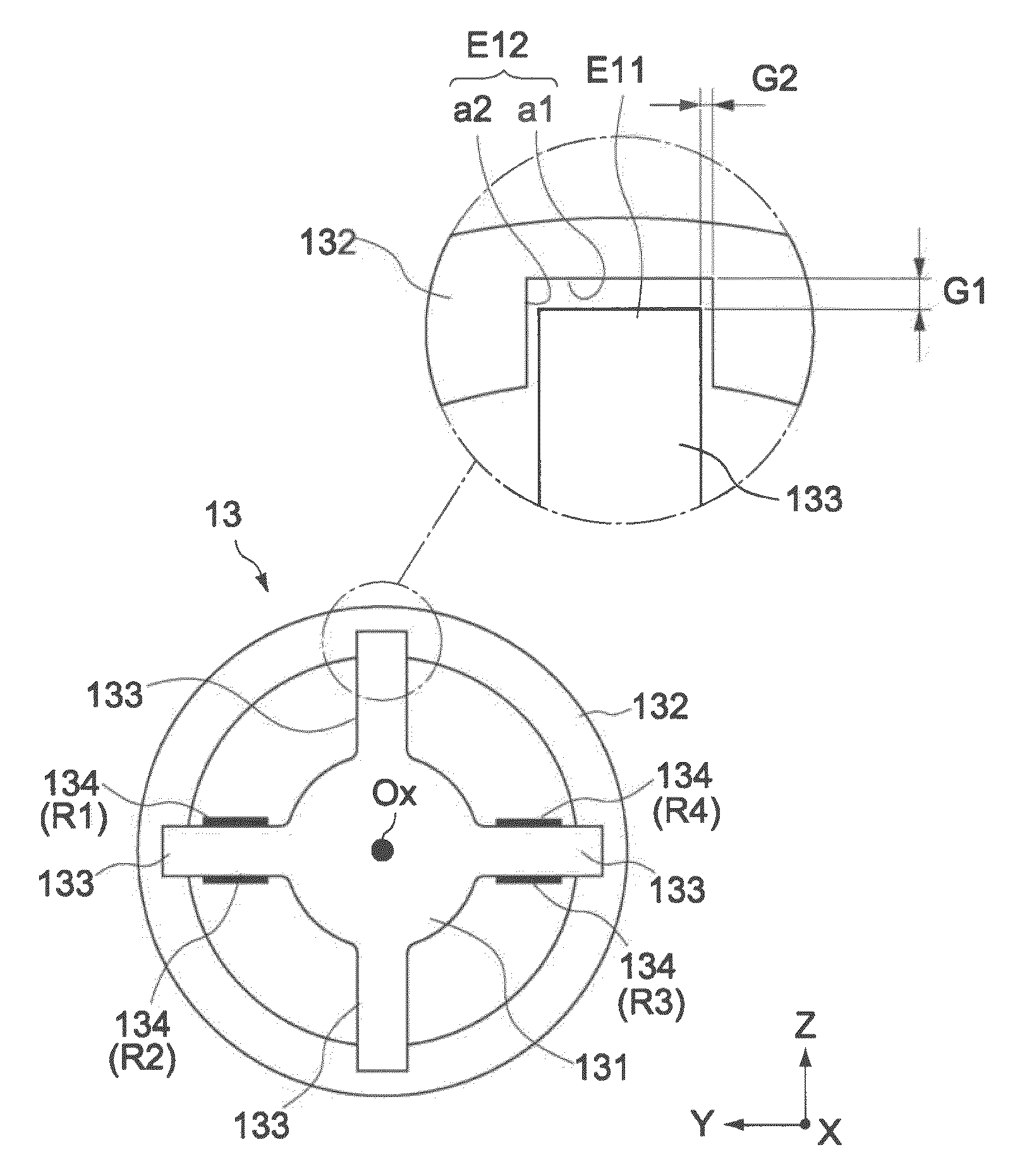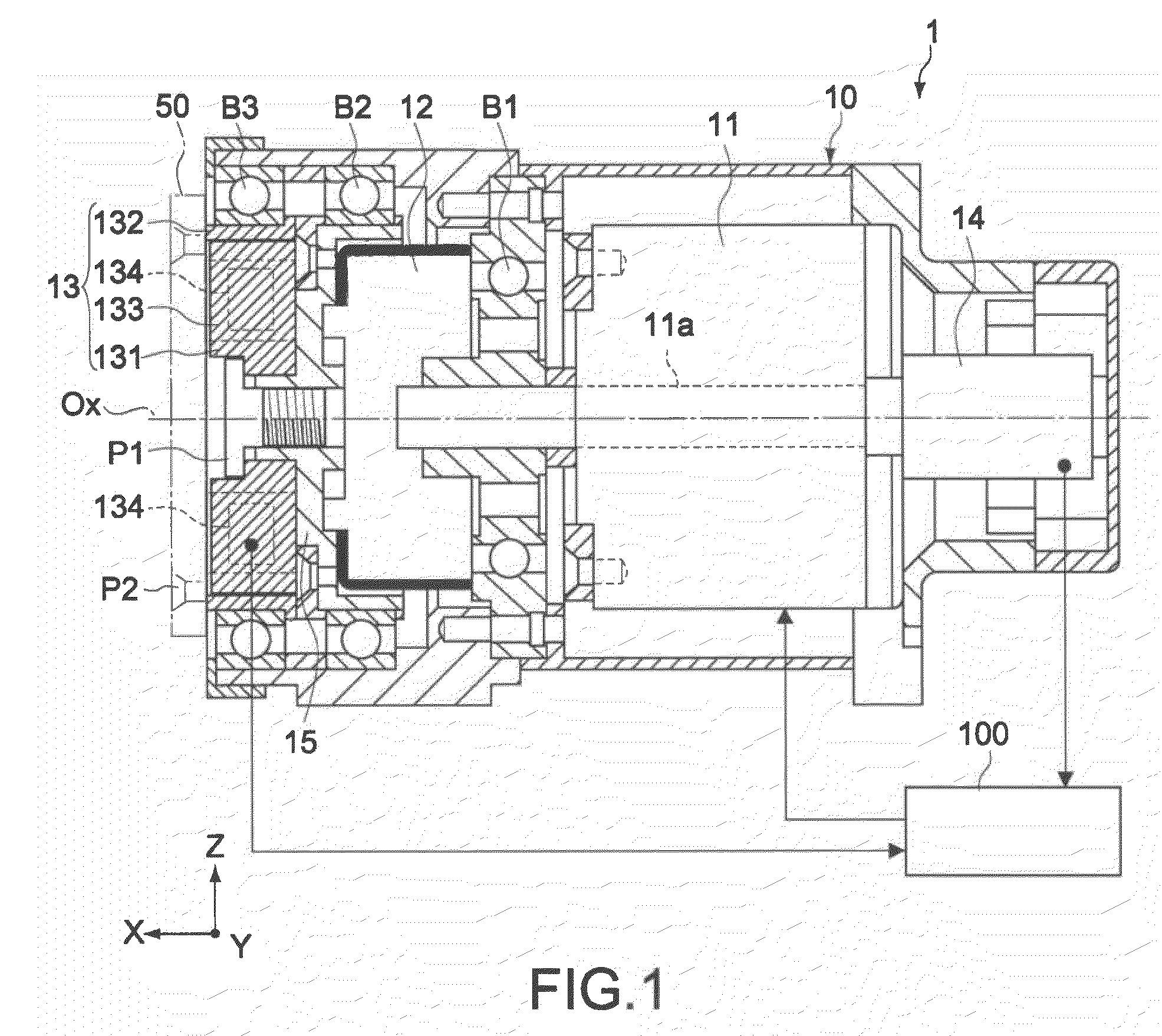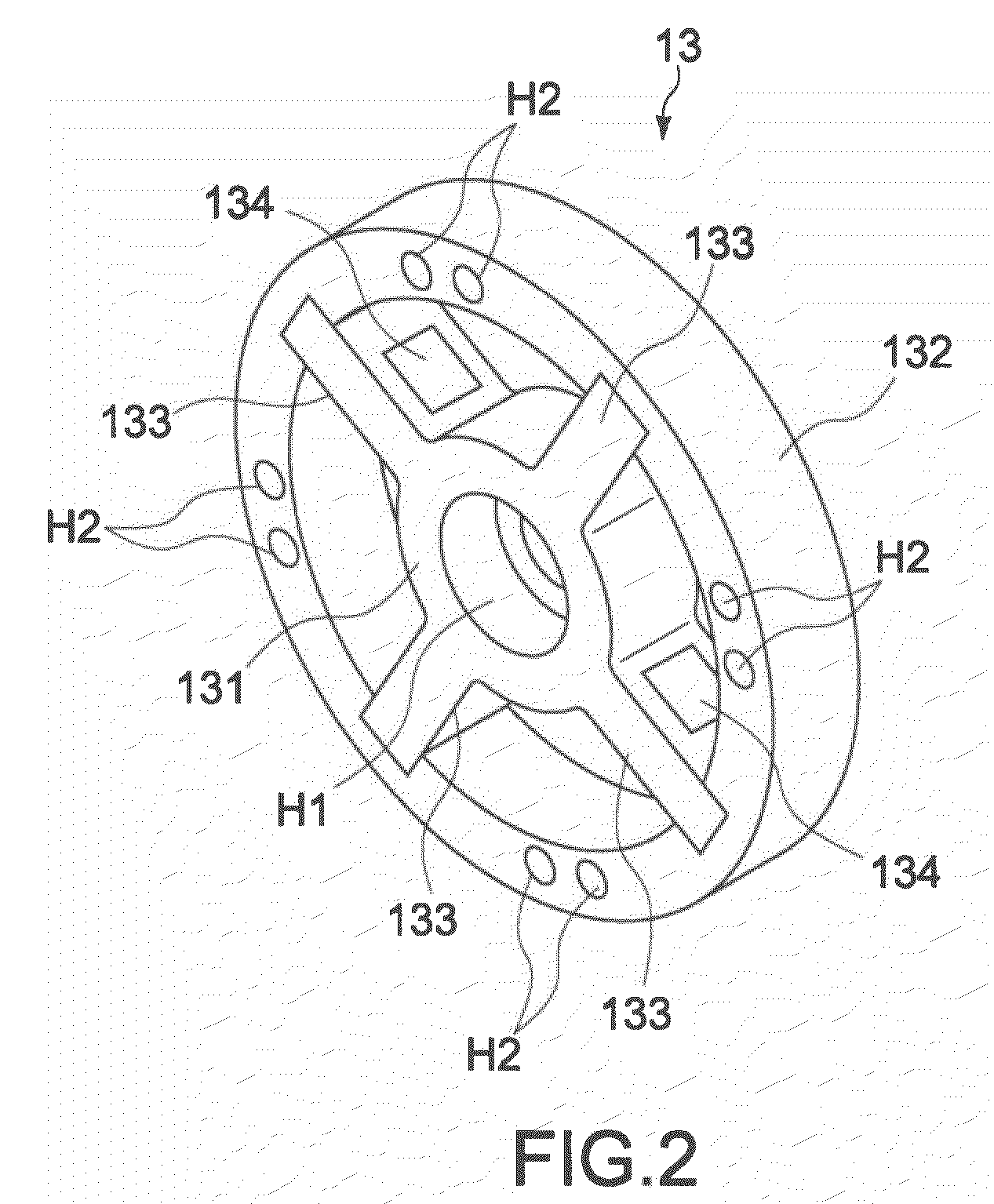Torque sensor and robot apparatus
a technology of torque sensor and robot, which is applied in the direction of force/torque/work measurement apparatus, instruments, manufacturing tools, etc., can solve the problems of increasing the size of the torque sensor, difficult to completely cancel, and difficult to apply the above-mentioned design to an application where a reduction in size and weight is needed, so as to achieve the effect of being easier to influen
- Summary
- Abstract
- Description
- Claims
- Application Information
AI Technical Summary
Benefits of technology
Problems solved by technology
Method used
Image
Examples
first embodiment
[0049]In the first embodiment, the inner ring 131 and the outer ring 132 are formed of a pair of concentric annular bodies. The pair of concentric annular bodies are arranged so as to be opposed to each other in a direction perpendicular to the X-axis direction, that is, a direction parallel to the YZ plane, and have diameters different from each other. The strain bodies 133 are integrally formed with the inner ring 131. The inner ring 131 is supported through the strain bodies 133 to the outer ring 132. The materials of the inner ring 131, the outer ring 132, and the strain bodies 133 are not particularly limited, and various structural materials made of an iron and steel material and a non-ferrous metal material can be used for the materials. For example, there may be used a material relatively easy to be elastically deformed when receives the rotational torque generated through the speed reducer 12.
[0050]In the center portion of the inner ring 131, there is formed a screw hole H1...
second embodiment
[0075]Next, the present invention will be described.
[0076]FIG. 8 is a front view of a torque sensor according to the second embodiment. The torque sensor 23 of the second embodiment includes an inner ring 231 (first rotating body), an outer ring 232 (second rotating body), and strain bodies 233. Similarly to the first embodiment, the inner ring 231 and the outer ring 232 are formed of a pair of concentric annular bodies. The pair of concentric annular bodies are arranged so as to be opposed to each other in a direction perpendicular to the X-axis direction, that is, a direction parallel to the YZ plane, and have diameters different from each other.
[0077]The inner ring 231 includes an input shaft to which an output torque of the speed reducer is input, and the outer ring 232 includes an output shaft (Ox) for rotating an output member. The strain bodies 233 are supported between the inner ring 231 and the outer ring 232, and transmit the output torque of the speed reducer from the inn...
third embodiment
[0083]In the third embodiment, the first rotating body 331 and the second rotating body 332 are formed of a pair of annular bodies arranged so as to be opposed to each other in the X-axis direction. The strain body 333 has a cylindrical shape (cylindrical portion) extending between the first rotating body 331 and the second rotating body 332 in the X-axis direction. Both end portions of the strain body 333 are engaged through an engaging structure 33a and an engaging structure 33b, which are schematically shown in hatching in FIG. 9, to the first rotating body 331 and the second rotating body 332, respectively. The materials of the first rotating body 331, the second rotating body 332, and the strain body 333 are not particularly limited, and various structural materials made of an iron and steel material and a non-ferrous metal material can be used for the material. For example, there may be used a material relatively easy to be elastically deformed when receives the rotational tor...
PUM
| Property | Measurement | Unit |
|---|---|---|
| size | aaaaa | aaaaa |
| rotational torque | aaaaa | aaaaa |
| diameters | aaaaa | aaaaa |
Abstract
Description
Claims
Application Information
 Login to View More
Login to View More - R&D
- Intellectual Property
- Life Sciences
- Materials
- Tech Scout
- Unparalleled Data Quality
- Higher Quality Content
- 60% Fewer Hallucinations
Browse by: Latest US Patents, China's latest patents, Technical Efficacy Thesaurus, Application Domain, Technology Topic, Popular Technical Reports.
© 2025 PatSnap. All rights reserved.Legal|Privacy policy|Modern Slavery Act Transparency Statement|Sitemap|About US| Contact US: help@patsnap.com



